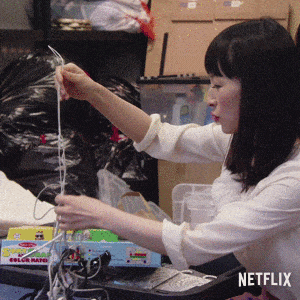My friend Dave used to be a bagholder, but he FOMO’d and bought even more BTC. Now, he’s a big whale HODLing for that moon.
…that’s a lot to take in for just two sentences. If you’re new to Bitcoin and the world of cryptocurrencies, we understand if the statement didn’t make any sense to you—it didn’t make sense to us at first too.
All jokes aside, it’s one thing to start buying and selling Bitcoin, but another to engage with an entire community that’s built an entire dictionary-worth of slang. If you’re looking to get yourself into the conversation and begin speaking the language, there’s quite a bit to cover. Luckily, we’ve compiled a list of some of the most popular slang being used today.
1. FOMO
Short for fear of missing out, FOMO can be used in everyday life. It refers to the sense of urgency to buy Bitcoin when everyone else is talking about it.

2. Shill
Shilling refers to the promotion of a cryptocurrency for the person’s own personal benefit. Although the term didn’t originate in crypto, its use in the space became widely popular.
People that would shill are likely those that have invested in a particular cryptocurrency that isn’t performing as well as they hoped and are trying to persuade other people to buy it so that the price would go up. Essentially, it’s all for personal gain.
3. FUD
Short for fear, uncertainty, and doubt, FUD refers to when people spread negative feelings about Bitcoin.
4. HODL
HODL is probably the most popular slang in Bitcoin. It refers to holding on to your BTC, despite volatility in price. Its use originated from a typo, where the user intended to type “hold” and misspelled it—probably out of pure excitement. It was then turned into a backronym, where the phrase hold on for dear life was attached after the typo happened.

5. Rekt
Rekt refers to the rock-bottom feeling of when someone experiences major losses from cryptocurrencies that have plummeted in value.
The term comes from the word wrecked, which is often used in gaming when a player gets completely destroyed. So whenever someone loses a significant amount of money on a cryptocurrency, they’re getting rekt.
6. Going to the moon
Going to the moon refers to the belief that the price of Bitcoin will experience a significant spike in the future.
If you say that Bitcoin is going to the moon, it means that you believe your investment is going to pay off very well in the future.

7. Whale
A whale is someone who owns a significant amount—usually 5% or more of the total supply—of a cryptocurrency.
8. Pump and dump
The term pump and dump refers to a tactic used by a group of cryptocurrency users to manipulate the sentiments of the market.
To pump effectively means to hype a cryptocurrency based on fake or misleading information and when the prices go up due to increased investor sentiment, the group will dump all their coins by selling them—which will, in turn, cause the price to drop again.
9. Bagholder
A bagholder refers to someone that’s holding onto a cryptocurrency that has plummeted in price—even to the point where it becomes worthless.
It’s similar to the thinking of hoarders: a bagholder will save their money—even if they’re worthless—for “a rainy day.”

10. Sats
Short for satoshis, sats are the smallest unit of Bitcoin. One sat is equal to 0.00000001 BTC.
11. No-coiner
A no-coiner is someone who believes Bitcoin is either doomed to fail or will have minimal value in the future. Because of that belief, they don’t hold any coins themselves.
12. Vaporware
Vaporware refers to a software project, cryptocurrency included, that never actually gets developed. It’s usually marketed and hyped to the point where everyone’s talking about it, but it’s simply never completed.
13. Cryptosis
Cryptosis refers to that never-ending thirst for cryptocurrency knowledge. Although it sounds like a disease, don’t worry—it isn’t life-threatening. However, the symptoms will include scouring forums, forcing cryptocurrency discussions among your friends, and overall, minimizing risks when trading.
14. ICO
An initial coin offering or ICO is the cryptocurrency equivalent to an initial public offering (IPO) which means raising funds through the sale of securities or shares for the first time to the public.
Basically, it refers to a crypto company’s fundraising project. They’ll lay out what it’s all about, the team behind it, and ask for investments to help build it. As a reward, they’ll offer new tokens—some of which may have utility in the project, while others will just represent a stake in the company.
15. Market cap
Market cap, short for market capitalization, refers to the total value of a specific cryptocurrency. It’s calculated by multiplying a coin’s current price by the circulating supply.
At the time of writing (March 15, 2022), Bitcoin’s current market cap is at 732,061,633,831 USD.
16. KYC
Short for know your customer or know your client, KYC refers to the verification of a user’s identity. Most cryptocurrency exchanges will implement this sort of rule not only to verify a trader’s identity but also to comply with regulations and keep their marketplaces safe.
17. NFTs
Non-fungible tokens or NFTs are unique, 1-of-1 cryptographic assets that have special identification codes built within them. They come in many shapes and sizes—Tweets, digital artwork, audio, and more.
18. WAGMI/NGMI
WAGMI is short for we’re all gonna make it. It is often used in the crypto community to build confidence and encourage everyone not to lose hope.
NGMI, on the other hand, is short for not gonna make it. It refers to the sentiment that you made a bad decision and your investment will not be successful.
Both of these terms are used in the cryptocurrency world but are more prominent in the NFT space—specifically Twitter and Discord groups.
19. Diamond hands/paper hands
Similar to HODL, diamond hands refer to holding Bitcoin even when there’s a ton of pressure to sell.
Paper hands refer to investors that sell off their investments too early—mostly because they’re afraid of the risk and are susceptible to panic.
20. Bullish/bearish
Bullish and bearish both represent a pattern in the market. Although they were mainly applied to traditional stock markets at first, they’ve found their way to the cryptocurrency space.
A bullish market will feature upward trends in price, while a bearish market will present downward trends.
21. Buy the dip (BTD)
Buying the dip or BTD means purchasing an asset after its price has dropped. The belief behind it is the same as when you convince yourself to buy something on sale at the mall.
Buying the dip represents buying Bitcoin at lower prices, hoping that it will rise again in the future.
Ready to join the conversation?
New slang finds its way onto the Internet every day. For a space that’s so young and lively, you can expect even more to find their way into online communities. There’s no need for FOMO though because even the greatest trader starts from zero.
Originally published on September 16, 2020 and updated on March 24, 2022